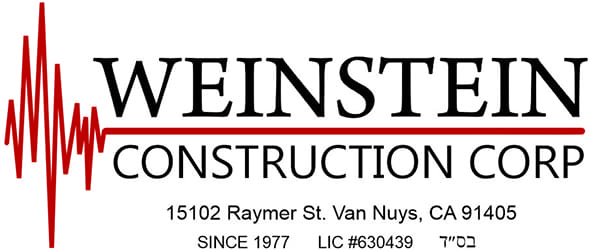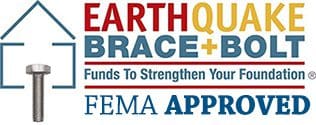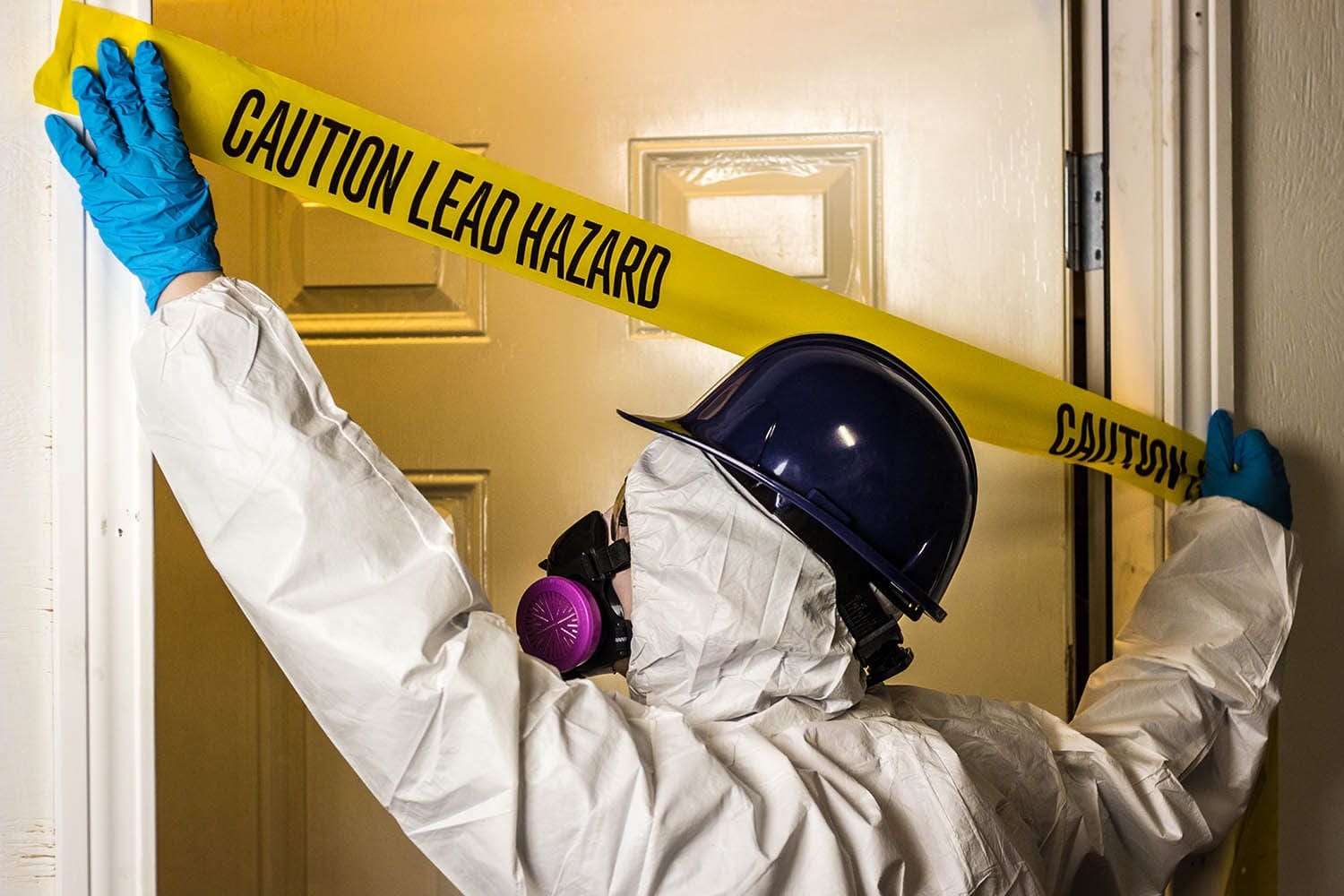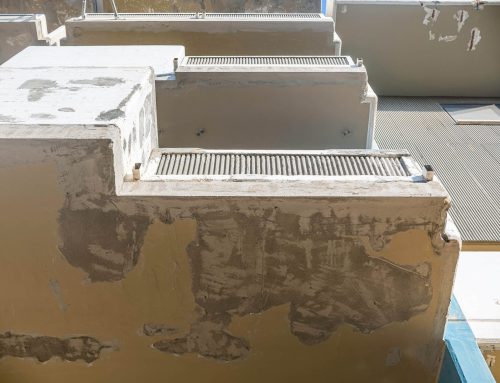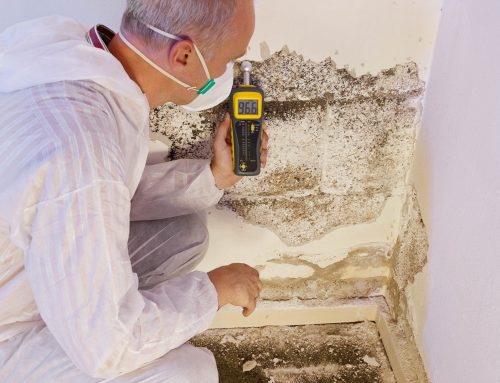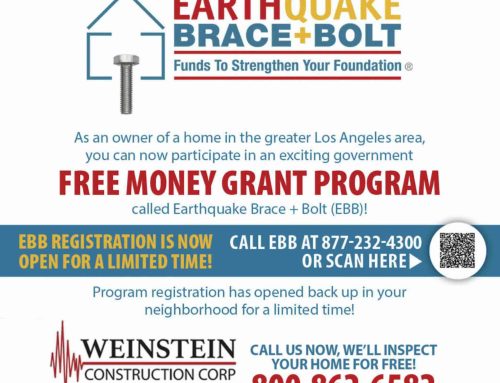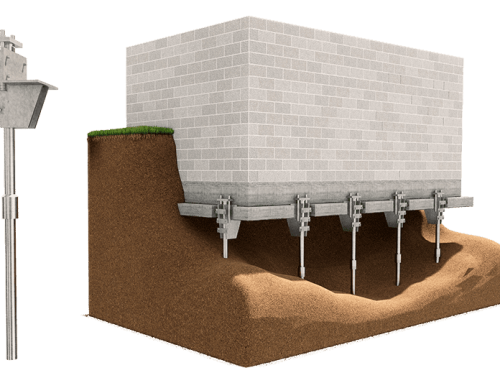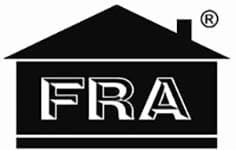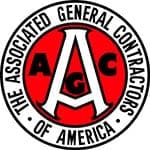What are a Soft Story retrofit project’s lead & asbestos testing, structural observations, and cost recovery?
In the previous blog in our series on Soft Story retrofitting, we discussed how the owner/landlord of a Soft Story building hires a structural and/or soil engineer and a construction firm to carry out a Soft Story Retrofitting project. In another blog in the series, we also discussed the required steps to comply with the Soft Story Retrofit programs of the City of Los Angeles as well as other surrounding cities. We also had a blog which explained what a typical Soft Story retrofit project looks like!
Today we’ll close this great blog series by discussing how to deal with a Soft Story Retrofit project’s Lead and Asbestos testing, Seismic Shut-Off Valves, Deputy Inspections, Structural Observations by the project’s Engineer-of-Record, and how We the owner and/or landlord of a Soft Story building can recover up to 50% of the costs of the Soft Story retrofit!
What is asbestos and lead testing
For many of our blog readers, a big question remains: what is asbestos and lead testing? Well, for many years, both homes and commercial properties in the greater Los Angeles area have been constructed using materials containing lead and asbestos, which are toxic to humans. For example, experts warn that 87% of homes built before 1940 contain lead paint, a toxin that affects the human nervous system! Although lead paint was banned in 1978, it is very common today to find homes still painted with lead paint in certain areas. However, the danger doesn’t stop there, as many 20th Century homes also contain asbestos in common building materials such as heating duct insulation, cement roofing, siding shingles, roof coatings, and even some types of vinyl floor tiles!
Why is asbestos and lead considered dangerous
If you are wondering why asbestos and lead are risk, that’s a good question, and one that must not be ignored. It is said that when lead paint is disturbed by chipping, scraping, or sanding, it releases particulates, and just a small amount of lead contaminated dust, less than 1/16 of the amount in a sugar packet, can cause nerve and brain damage in children, or hypertension in adults. Similarly, asbestos, when it deteriorates or is disturbed, releases microscopic fibers into the air, that when inhaled, can cause lung cancer, as well as other, rare forms of cancer.
How to test for lead and asbestos
Before owners and/or landlords of a Soft Story building can start their Soft Story retrofit project, they must undertake lead and asbestos testing on the work areas. Such testing must follow the standards set out by the US Occupational Safety and Health Administration (“OSHA”). If the testing shows lead paint or unacceptable levels of asbestos, these hazards must be remediated before the project can begin. If requested, Weinstein Construction can manage such testing for you, and will hire a licensed environmental services firm to perform this work.
Are seismic gas shut-off valves required in Los Angeles
If you are wondering if seismic gas shut-off valves are mandatory, the answer to that is most definitely yes! As per Los Angeles Municipal Code Ordinance 174478, the owner and/or landlord of a Soft Story building must also install and permit seismic gas shut-off valves on the Soft Story building. These valves are designed to automatically shut off the supply of natural gas to the structure when an earthquake occurs, in order to prevent a fire or explosion due to the accumulation of gas in the building. Note that the owner and/or landlord of a Soft Story building will not be able to obtain a final City approval for the project until such shut-off valves are installed and permitted. The good news is that, if requested, Weinstein Construction can assist in installing these valves!
Why are Deputy Inspections necessary on a Soft Story Retrofit Project
Many of our clients ask us why owners and/or landlords of a Los Angeles Soft Story building are required to hire and pay for Deputy Inspectors? This is because Deputy Inspectors provide continuous inspections for the retrofit project during those time periods that the City of Los Angeles Department of Building and Safety (“LADBS”) Inspectors are unable to fulfill their inspection duties. The LADBS certifies Deputy Inspectors through a rigorous interview and examination process, and evaluates the work they do to maintain a high standard of inspection. The Deputy Inspectors typically inspect and approve onsite steel welding, reinforced steel rebar, mix of concrete used on the project, wood shearing nailing, as well as other aspects of the construction. As such, it is imperative that the project’s Deputy Inspectors have the correct certifications, as otherwise, the City Inspector will not approve the project.
What is a Structural Observation Report?
If you have ever had a Soft Story Retrofit Project, then you’ve probably seen the project’s Engineer-of-Record complete a Structural Observations Report (“SOR”), which involves the visual observation of the structural system of the project, in order to ensure that the project conforms to the approved plans and specifications. If the Engineer notes any deficiencies in the structural system of the project, the Engineer will formally propose corrective actions to mitigate any issues found. Before the City Inspector will accept the work undertaken on the Soft Story project, the Engineer is required to provide an SOR which states that all deficiencies have been resolved satisfactorily.
What is the Soft Story Landlord Cost Recovery Program
If you are an owner and/or landlord of a Soft Story building, then you are probably very interested in learning more about the Soft Story Landlord Cost Recovery Program, which can save you big money! In Los Angeles, owners and/or landlords of Soft Story buildings who have properly filed a Tenant Habitability Plan (“THP”) are able to recover up to 50% of the costs of the retrofit project through tenant rent increases over a period of 10 years. Once your Soft Story project is complete, your contractor can assist you in submitting a Cost Recovery application that, after City approval, will trigger letters from the City to the tenants, informing them of the rent raise. In order to process the Cost Recovery forms, your contractor will need to submit to the City’s Housing and Community Investment Department (“HCIDLA”) a copy of the THP, as well as copies of all cancelled bank checks showing the Soft Story retrofit project expenses.
Let Weinstein Construction take the worry and stress out of your Los Angeles Soft Story Retrofit Project! If you wish to discuss with one of our Soft Story professionals the process for hiring an engineer, or if you’d like for us to recommend one to you, please call us at (888) 412-8363. At this time, we can also schedule you for a free, no-obligation inspection and estimate to retrofit your Soft Story structure!
